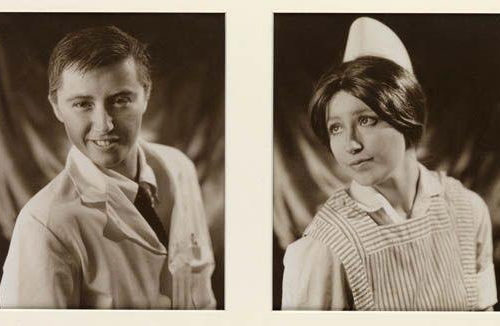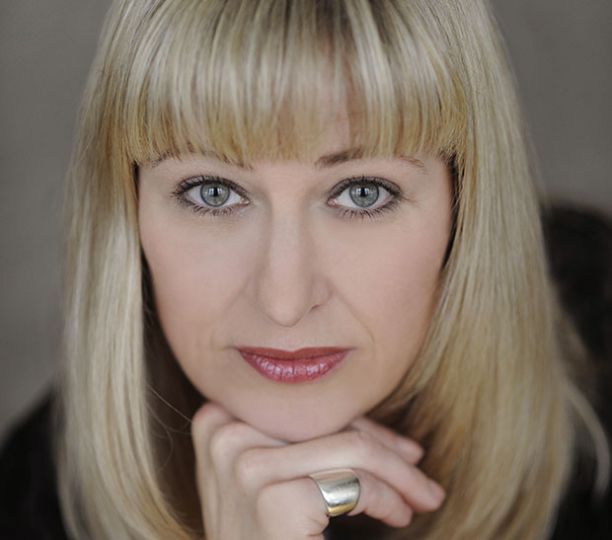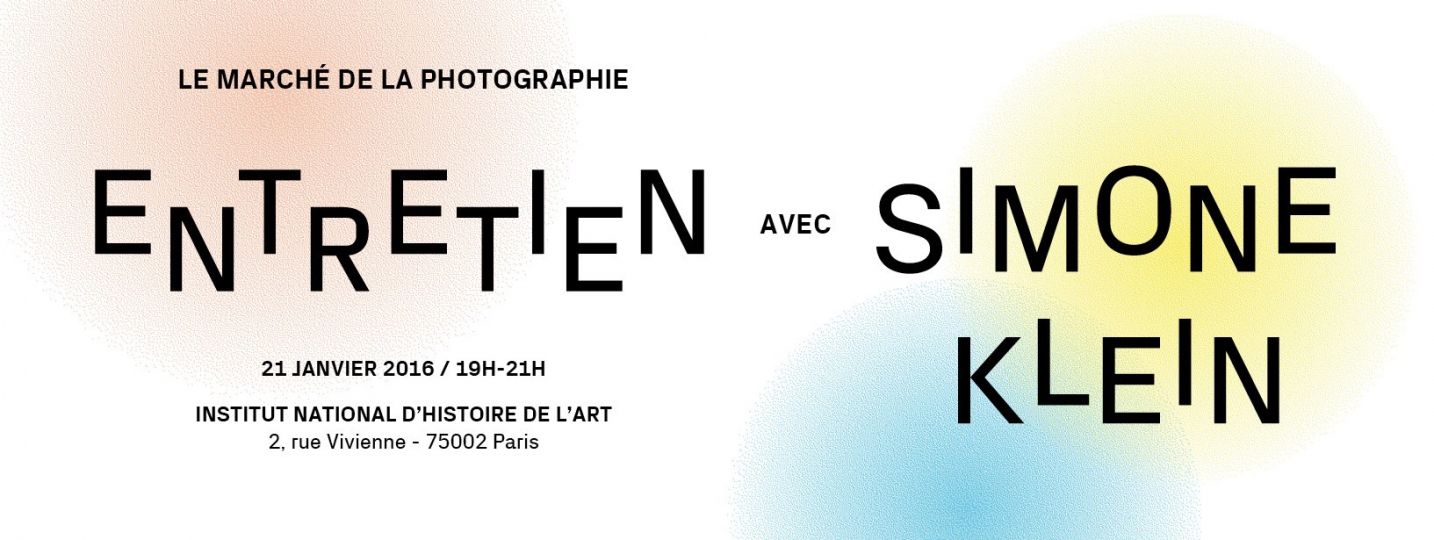Interview by Clara Bastid and Isabella Seniuta
Throughout the history of photography, experts, collectors, and traders have participated in setting the value of photographic prints. The photography market is a recent phenomenon, which emerged in the context of auctions in the 1970s. Within forty years of its existence, the rankings of certain photographers have risen considerably, and auction houses have played a key role in establishing how the market functions.
What are the tools used today to set prices and how are photography auctions orchestrated?
What follows is a conversation with Simone Klein, the Global Print Sales Director at Magnum Photos, who helped develop the department of photography at Sotheby’s between 2006 and 2015.
What were your first encounters with photography?
I studied art history in Bonn, Germany, where I had the opportunity to attend an exceptional course in the history of nineteenth-century photography given by professor Bodo Von Dewitz. He was the curator of photography at the Ludwig Museum in Cologne. Thanks to his teaching, I became fascinated by this area.
Early on, who inspired you?
I have always been impressed by the career of the American gallery owner Harry Lunn and by André Jammes, the great French collector of antique photographs. In addition, Rudolf Kicken, the founder of one of the oldest photography galleries in Germany, also taught me a lot during my year-long job assisting at his Cologne gallery.
Was is with gallierist Rudolf Kicken that you learned to train your eye?
Precisely. It was a transition between the academic world specialized in nineteenth-century photography and the business world of 1920s’ and 30s’ photography. Rudolf Kicken also represented contemporary photographers such as Helmut Newton.
When you started working in the 1990s, what was the photography market like?
At the time, photography was a relatively overlooked niche; there were few jobs at the university and in cultural institutions. When I graduated, I knew that the academic and institutional world was not for me. And, as the photography market was still young, I wanted to be a part of it.
What types of photographs sold well in the 1990s?
When I became auction sales manager at Lempertz, in 1997, the market was mainly focused on so-called modernist, post-1920 photography. We also sold more contemporary photographs, such as the Bechers. Color photography had not yet received much attention in the market. The work of the Düsseldorf school photographers, such as Andreas Gursky, Thomas Struth, and Thomas Ruff, did well in galleries but not at auctions.
You witnessed the success of color and large-format photography?
Initially, we offered color photographs only occasionally such as, for example, Stephen Shore’s prints from the 1970s. At the time, these images had a low market value, but the prices jumped rapidly. Afterwards, there emerged photographers such as Andreas Gursky who would create editions of fifteen or twenty small-format prints. These prints sold for 200 euros the first few years, but two or three years later went for as much as 1,000 euros.
What is the role of art fairs in the development of the photography market?
The first edition of Paris Photo in 1997 at the Carrousel du Louvre was a breakthrough. The fair was founded by Rik Gadella and modeled after the American photography show AIPAD in New York where American galleries primarily exhibited vintage prints. Nowadays, it is a world event, but at the beginning it was an insider’s event.
Has Paris Photo contributed to the soaring prices?
In Europe, that has certainly been the case. For the first time this show has brought together a broad spectrum of galleries. Paris Photo started something unprecedented, and this is its great achievement.
You have mentioned series of 20 to 30 copies. Gradually, however, this number decreases, and photographs are printed in increasingly limited editions. How does one define rarity in a market of objects that are a priori infinitely reproducible?
In order to set an estimated sale price in an auction, one must take into account the quality of the print, its date, provenance, the state of preservation, and the reputation of the photographer. Sometimes you need only to flip the print over in order to find a wealth of useful information about the provenance or the author. For example, there may be considerable differences between vintage prints, subsequent prints, or posthumous prints. In the case of Man Ray, a vintage print may be worth as much as € 500,000 while the same image printed later may be worth a tenth of this value.
Finally, the personal history of the object is essential. If a photogram from Jean Cocteau’s collection should appear on the market, the value of the object will increase due to its history and provenance.
If a work is sold several times over a decade, could it lose value?
Not necessarily. Everything depends on the artist’s market rating and how that artist is represented institutionally. For example, if you purchase a photograph by Man Ray, and shortly thereafter MoMA organizes a retrospective, the print may appreciate in value. In the case of contemporary photographs, prices may change even more rapidly, especially if the works in question enjoy media success. While a series by a contemporary photographer may sell at an elevated price at a gallery at Paris Photo, the following year the same photograph may be resold at auction for several times as much.
When even an original digital file can be copied, how do you tell an original print from a fake?
Insofar as you can reproduce a 1920s’ print and print it on vintage paper, anything is possible in photography since it is a reproducible medium. What matters to a collector is knowing the origin and the nature of the object.
A study recently conducted by Larry’s List shows that the collector’s profile varies depending on the country and continent. For example, in China, collectors are much younger than in Europe. Do you find that these profiles constantly evolve? If so, how do you adapt and maintain privileged relationships?
There are two principal categories of collectors. On the one hand, there are collectors who are interested in antique and modern photography, who buy unique and rare objects with particular provenance, often at very high prices. On the other hand, there are generally younger collectors who buy contemporary works, including mixed media, and who know the ins and outs of the contemporary art market.
Who is behind auction sales at Sotheby’s and how are auctions organized?
Auctions are scheduled on a rotating calendar, every six months: one sale in Spring, around Photo London; another during Paris Photo. During art fairs the public, composed of art lovers and collectors, is already established. Interested buyers are thus more attentive to the gallery offerings and auction sales. Alternatively, Sotheby’s may organize a sale based on a private collection at any point in the year.
Could you tell us more about your decision to join Magnum Photos as a Global Print Sales Director?
This was a very personal decision. After having worked for twenty years at an auction house, I was invited by the Magnum Photos agency to help develop their strategies for print sales. I will be in charge of contemporary prints, like a gallery manager, and I will oversee vintage photography collections at Magnum.
What are your upcoming projects at Magnum Photos? Are you going to sell at the agency or open a new location?
Magnum used to have a gallery in the 6th Arrondissement which has recently closed. For the moment, we don’t have a proper showroom to speak of, but we are in the process of creating such a space at the agency’s location in the 18th Arrondissement in Paris. This is where we will be organizing exhibitions, opening receptions, book signings, and other events. Magnum will soon enjoy a whole new life there.
How do you view press images , which initially were used as instruments for reading articles, and tools for journalism, but then made their way to the art market?
The photojournalism market is quite difficult and attracts few collectors. The sale of images initially intended for the press must confront the question of copyright. Not all prints may be sold since a press photo belongs to the photographer.
There are collectors who are interested in the narrative and historical aspect of images, since this is a major part of photographic production. For example, André Kertesz’s press photos from the 1920s attain very high prices because these are vintage prints and they often display news agency stamps on the verso. So the question is: should we sell vintage prints, or is it better to sell later or posthumous prints in order to leave the archives intact? For the moment, there is no clear-cut answer. Sales are made on a case-by-case basis upon consultation with the photographer or his or her estate. At Magnum, if you buy a press photo you will have the option of asking experts for more information and the agency will supply a certificate of authenticity.
Would you advise our readers to become collectors?
Yes! Whether you are an art lover or a serious collector, the world of photography is very rewarding. To start your own collection, I suggest you focus on a genre, such as portraiture, or on a period, or a theme, such as street photography. You need only to spend a day at Paris Photo to see how fascinating this world is.


















